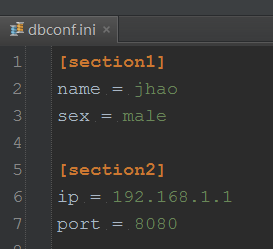Python中的数学运算操作符使用进阶
Python中对象的行为是由它的类型 (Type) 决定的。所谓类型就是支持某些特定的操作。数字对象在任何编程语言中都是基础元素,支持加、减、乘、除等数学操作。
Python的数字对象有整数和浮点数,支持各种数学操作,比如+, -,*, /等。 没有这些操作符,程序中只能使用函数调用的方式进行数学运算,比如add(2, 3), sub(5, 2)。
程序中操作符的作用与普通数学操作的用法是一致的,使用中更加简便直观。Python中,这些操作符实现是通过定义一些object的特殊方法实现的,比如object.__add__()和object.__sub__()。如果用户在自己定义类时实现上述特殊方法,可以使自定义类的对象支持相应的数学操作,从而模拟数字对象的行为。这其实是达到了操作符重载的效果。
这里通过实现一个具有支持加法运算的中文数字类说明如何在Python中实现一个支持常见的数学操作。ChineseNumber类的基本定义如下。
class ChineseNumber:
def __init__(self, n):
self.num = n
self.alphabet = [u'零', u'一', u'二', u'三', u'四',
u'五', u'六', u'七', u'八', u'九', u'十']
def __str__(self):
sign = '负' if self.num < 0 else ''
return sign + ''.join([self.alphabet[int(s)] for s in str(abs(self.num))])
def __repr__(self):
return self.__str__()
目前,实现的效果是这样的:
>>> a = ChineseNumber(2) >>> a #调用a.__repr__() 二 >>> print(a) #调用a.__str__() 二
一般数学操作符
定义类时,实现__add__()方法,可以给这个类增加+操作符。给ChineseNumber增加如下方法:
def __add__(self, other):
if type(other) is ChineseNumber:
return ChineseNumber(self.num + other.num)
elif type(other) is int:
return ChineseNumber(self.num + other)
else:
return NotImplemented
这时ChineseNumber的对象就可以使用+了。
>>> a, b = ChineseNumber(2), ChineseNumber(10) >>> a + b 十二 >>> a + 5 七 >>> a + 3.7 TypeError: unsupported operand type(s) for +: 'ChineseNumber' and 'float'
对于+,a + b相当于调用a.__add__(b). 类似地,可以定义其他数学操作符,见下表。
object.__add__(self, other): + object.__sub__(self, other): - object.__mul__(self, other): * object.__matmul__(self, other): @ object.__truediv__(self, other): / object.__floordiv__(self, other): // object.__mod__(self, other): % object.__divmod__(self, other): divmod, divmod(a, b) = (a/b, a%b) object.__pow__(self, other[,modulo]): **, pow() object.__lshift__(self, other): << object.__rshift__(self, other): >> object.__and__(self, other): & object.__xor__(self, other): ^ object.__or__(self, other): |
操作数反转的数学操作符 (Reflected/Swapped Operand)
>>> 2 + a TypeError: unsupported operand type(s) for +: 'int' and 'ChineseNumber'
2是整数类型,它的__add__()方法不支持ChineseNumber类的对象,所以出现了上述错误。定义操作数反转的数学操作符可以解决这个问题。给ChineseNumber类添加__radd__()方法,实现操作数反转的+运算。
def __radd__(self, other):
return self.__add__(other)
对于a + b,如果a没有定义__add__()方法,Python尝试调用b的__radd__()方法。此时,a + b相当于调用b.__radd__(a)。
>>> a = ChineseNumber(2) >>> 2 + a 四
类似地,可以定义其他操作数反转的数学操作符,见下表。
object.__radd__(self, other): + object.__rsub__(self, other): - object.__rmul__(self, other): * object.__rmatmul__(self, other): @ object.__rtruediv__(self, other): / object.__rfloordiv__(self, other): // object.__rmod__(self, other): % object.__rdivmod__(self, other): divmod, divmod(a, b) = (b/a, b%a) object.__rpow__(self, other[,modulo]): **, pow() object.__rlshift__(self, other): << object.__rrshift__(self, other): >> object.__rand__(self, other): & object.__rxor__(self, other): ^ object.__ror__(self, other): |
运算赋值操作符
运算赋值操作符使用单个操作符完成运算和赋值操作,比如a += b相当于调用a = a + b。为ChineseNumber增加__iadd__()方法,可以实现+=操作符。
def __iadd__(self, other):
if type(other) is ChineseNumber:
self.num += other.num
return self
elif type(other) is int:
self.num += other
return self
else:
return NotImplemented
此时,
>>> a, b = ChineseNumber(2), ChineseNumber(10) >>> a += b >>> a 十二 >>> a + 7 >>> a 十九
类似地,可以定义其他运算赋值操作符,见下表。
object.__iadd__(self, other): += object.__isub__(self, other): -= object.__imul__(self, other): *= object.__imatmul__(self, other): @= object.__itruediv__(self, other): /= object.__ifloordiv__(self, other): //= object.__imod__(self, other): %= object.__ipow__(self, other[,modulo]): **= object.__ilshift__(self, other): <<= object.__irshift__(self, other): >>= object.__iand__(self, other): &= object.__ixor__(self, other): ^= object.__ior__(self, other): |=
一元数学操作符
一元数学操作符是只有一个操作数的运算,比如取负数的操作符-。-对应的特殊函数是__neg__()。为ChineseNumber添加__neg__()方法,
def __neg__(self):
return ChineseNumber(-self.num)
此时,ChineseNumber对象就支持-操作了。
>>> a = ChineseNumber(5) >>> -a 负五
其他一元运算符见下表。
object.__neg__(self): - object.__pos__(self): + object.__abs__(self): abs() object.__invert__(self): ~ object.__complex__(self): complex() object.__int__(self): int() object.__float__(self): float() object.__round__(self): round() object.__index__(self): operator.index()

